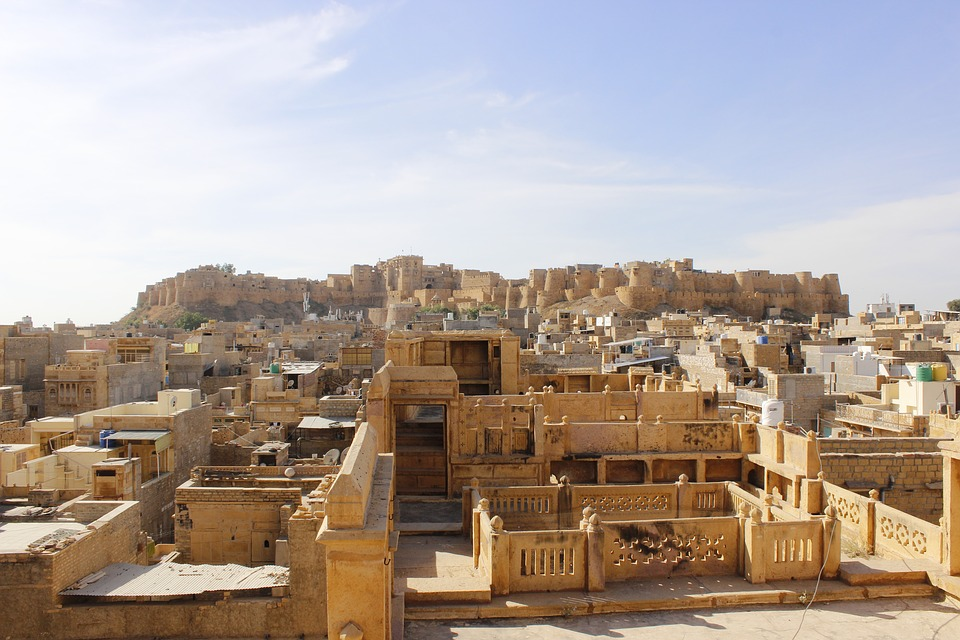
Are you looking for some adventurous experience? Well, Jaisalmer is the perfect tourist destination for adventure lovers. Despite being one of the hottest and secluded cities, Jaisalmer is considered the gem of Rajasthan. This tourist spot is named after the popular Raja ‘Jaisal Singh’. The Jaisalmer involves the most adventurous trip since this region is a stone’s throw away from the controversial country ‘Pakistan’.
Jaisalmer also refers to the Golden City. The city is adorned with a beautiful yet super tall fort, located right in the middle of the town. Being a Rajasthani gem, Jaisalmer is known for its never-ending sand dunes (the main attraction of the city). The desert is an ideal destination for visitors who want to experience camel riding, sightseeing, dune bashing, and jeep tours. This powerful city has many attractions and a lot of interesting activities to offer to its tourists. Let’s see how you can reach here.
How to Reach Jaisalmer?
You can reach Jaisalmer from Jodhpur by catching a bus. However, it takes more than 5-6 hours to reach the destination if you choose the bus route. Luckily, there are many private cars and taxi services that take you to Jaisalmer quickly. Book a cab from Jodhpur to Jaisalmer and keep reading to know the top things you can do here.
Sightseeing
The city is known for its famous and historic fort, which is located right in the centre of the town. The fort is one of the major attractions of Jaisalmer. If you want to enjoy a hassle-free tour experience, sightseeing is your pick. Apart from the grand fort, Jaisalmer is known for many attractions such as Patwon Ki Haveli, Gadisar Lake, Inter Alia, Sadar Bazar, and Desert National Park.
You can take the tourist sightseeing tour and get a chance to admire these magnificent places. If you have enough time, pay a visit to the Heritage Museum and Desert Museum. For history lovers, the museum is going to be an educational trip.
Boating on Gadisar Lake
Gadisar Lake is the perfect escape for tourists who cannot bear the heat and dryness of this city. Named after its founder ‘Maharawai Gadsi Singh’, this lake was built in 1367. Both locals and tourists love to experience boating here. You can either take your friends for a memorable boating experience or go alone to unwind.
The lake receives many visitors throughout the year. But, it still is the most peaceful destination in the city.
Go Shopping
When it comes to the fun things to do in a Rajasthani city, you cannot miss out on shopping. Rajasthan is known for its unique heritage and culture. Tourists come from international countries to explore their rich culture. It only makes sense to go shopping and buy clothes, accessories, camel leather items, sandstone showpieces, wooden ornaments, handicrafts, decorative products, and much more.
Jaisalmer has colourful shopping markets. The city mostly sells highly-embellished clothes and heavy jewellery. If you are a shopaholic, Rajasthan has many shopping centres for you. Some famous markets in Jaisalmer are Sonaron Ka Baas, Manak Chowk, Bhatia Bazaar, Pansari Bazaar, and Khadi Gramodyog Bhavan.
Parasailing
Are you looking for an offbeat activity in this fort city? Well, parasailing is not common here. Though many tourists’ spots offer parasailing services, tourists get so busy walking through the sand dunes that this option doesn’t even exist for them.
Parasailing is the best way to explore Jaisalmer from the top. It’s beautiful to see the never-ending desert occupied by camels and tourists’ jeep. If you want a good sightseeing experience, Parasailing can make a brilliant option.
Quad Biking
You have not visited Jaisalmer if you didn’t explore the desert here. The desert is not so far from the main city. You can avail a reliable Jaisalmer taxi service to get to this spot and engage in the most thrilling activities here. If you look around, you will find some adventurous tourists riding their Quad bikes on the sand dunes. You can do that too!
For a better experience, ride this in an enclosed circuit. This will create sandy whirlpools. If you want to enjoy your Jaisalmer trip to its fullest, then ride the Quad bike and have the best time of your life.
Dune Bashing and Camel Riding
Do you want to experience an adventurous jeep ride on a bumpy terrain? Well, the Thai desert of Jaisalmer is famous for its uneven terrain that gives a wonderful jeep riding experience. Rent an SUV and improve your driving skills in this secluded yet adventurous desert.
Dune Bashing is done under professional’s supervision since it involves difficult turns and strong driving skills. Thai Dessert is also known for camels. Get on a camel and enjoy a beautiful ride in the desert.




